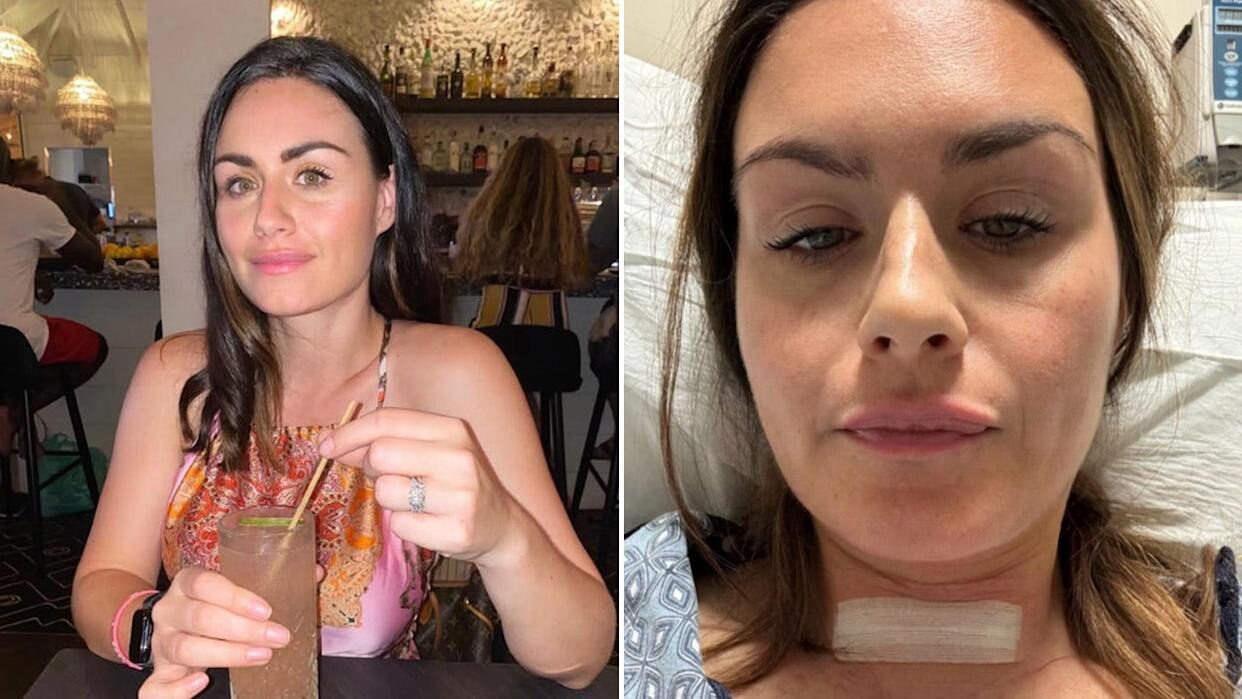When AI Becomes a Lifesaver
Such a miracle by artificial intelligence (AI) in making a medical diagnosis is Lauren Bannon, a 40-year-old executive in marketing whose life ChatGPT saved after diagnosing thyroid cancer mistakenly by doctors on several occasions.
After visiting several doctors convinced that her symptoms were indicative of rheumatoid arthritis and acid reflux, she finally consulted OpenAI’s ChatGPT. What this AI figured out led to the diagnosis of two cancerous lumps in her thyroid, thus catching it early enough, before spreading.
This case raises critical questions about AI’s role in healthcare, the limitations of traditional diagnostics, and how patients can responsibly use AI to advocate for their health.

The Misdiagnosis That Led to a Life-Saving AI Suggestion
1. Dismissed Symptoms and Failed Diagnoses
Bannon, who splits her time between North Carolina and the US Virgin Islands, began experiencing rapid weight loss and severe stomach pains. Despite multiple doctor visits, physicians attributed her symptoms to:
- Rheumatoid arthritis (an autoimmune disorder affecting joints)
- Acid reflux (GERD)
- Stress-related digestive issues
However, none of these explanations aligned with her worsening condition.
“It felt like the doctors didn’t really care,” Bannon shared with The Mirror. “They seemed more focused on handing out prescriptions and rushing patients through.”
2. ChatGPT’s Unexpected Intervention
Desperate for answers, Bannon turned to ChatGPT, which she already used for work-related tasks. She entered her symptoms and asked:
- “What mimics rheumatoid arthritis?”
- “Why am I losing weight rapidly?”
Artificial intelligence suggested that Hashimoto’s disease, an autoimmune process attacking the thyroid, may be present, and recommended testing for thyroid peroxidase antibody (TPO).
3. Doctors’ Skepticism and the Breakthrough Discovery
The first time Bannon inquired of her doctor about being tested for Hashimoto’s, she was turned away. The doctor responded,
- “I couldn’t possibly have that; there’s absolutely no family history.”
- Bannon insisted, saying, “Just amuse me.”
The blood test and subsequent thyroid ultrasound revealed:
- Elevated TPO antibodies (confirming Hashimoto’s)
- Two small cancerous lumps in her thyroid
“If I hadn’t looked on ChatGPT, I would’ve just taken the rheumatoid arthritis medication, and the cancer would’ve spread from my neck to everywhere else,” Bannon said.
Why Traditional Diagnostics Failed—And How AI Helped
1. The Limitations of Human Diagnosis
- Bias toward common conditions: Doctors often default to frequent diagnoses (like arthritis) rather than rare ones.
- Restricted time: Average minutes spent with a patient by physicians vary between 13-16 minutes which limit probing thoroughly.
- Atypical symptoms: Classic signs of Hashimoto’s disease such as fatigue and weight gain were missing in Bannon, which made diagnosis more difficult.
2. How AI Filled the Gap
- Analyzed symptom patterns: Unlike doctors, ChatGPT processed Bannon’s full symptom list without bias.
- Suggested rare conditions: AI models are trained on vast medical databases, including less common diseases.
- Empowered patient advocacy: Bannon used AI’s suggestion to push for specific tests she wouldn’t have known to request.
The Future of AI in Healthcare: Risks and Opportunities
1. Can AI Replace Doctors?
No—but it can assist.
AI excels at:
- Identifying rare disease patterns
- Suggesting potential diagnoses
- Helping patients advocate for tests
But it lacks:
- Clinical judgment (e.g., weighing risks of unnecessary testing)
- Physical examinations (e.g., detecting subtle symptoms)
2. Risks of Self-Diagnosing with AI
- Misinformation: Not all AI medical advice is accurate.
- Over-testing: Patients may demand unnecessary procedures.
- Anxiety: False positives can cause undue stress.
3. How to Use AI Responsibly for Health
- Use AI as a research tool—not a final diagnosis.
- Verify AI suggestions with licensed doctors.
- Push for tests if symptoms persist, but avoid self-treatment.
Bannon’s Message: “ChatGPT Saved My Life”
Bannon’s story highlights AI’s potential to save lives when used wisely:
- “I would encourage others to use ChatGPT with their health concerns—act with caution, but if it gives you something to look into, ask your doctors to test you.”
- “I feel lucky to be alive. I would’ve never discovered this without ChatGPT.”
Her early cancer detection allowed for timely treatment, potentially preventing metastasis.
Conclusion: AI as a Medical Ally—Not a Replacement
While ChatGPT isn’t a doctor, Bannon’s case proves AI can be a powerful diagnostic aid—especially when traditional medicine falls short.
Key Takeaways:
- AI can spot overlooked conditions by analyzing symptoms without bias.
- Patients should use AI to guide—not replace—medical consultations.
- Early detection saves lives: Advocate for tests if something feels wrong.
As AI evolves, its role in supporting doctors and empowering patients will only grow—but responsible use remains critical.



